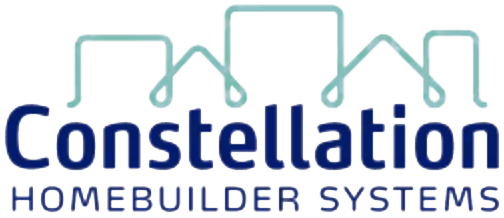Technology
Welcome To Homebuilding's New World Of Real-Time, Or Else
The reason to call out the importance of discovering and plotting out each process to the point it becomes "data-driven," is that once it takes that form, it can be managed – across axes of time, expense, value creation, etc. – to improve to a point of best practice.

A couple of weeks ago, during commentary about Lennar's Q2 2023 financial results, the firm's executive chairman Stuart Miller gave a nod – as he's apt to do in meetings with investment analysts – to a new team member.
We mention it here. Miller highlights a critically impactful role relational operational data plays in Lennar's "dynamic pricing model," which essentially unfurls – in realtime and in real life – a specific set of marching orders to price that particular house with that particular customer at that particular moment ... yielding in the end, that particular gross margin.
Without unpacking particulars, Miller offers this sense of what's at work and how results come to be based on that:
It's a very integrated set of systems that is dependent on feedback loops. And any time that you find a process that becomes data-driven and the data improves to the point that it's actually relevant. At that point, there are large learning models that can be helpful in enhancing productivity.
These are the areas where we are leaning in. I mentioned that we brought on a strategic Chief Technology Officer in Scott Spradley. And all of this is a coordinated program of taking steps at a time to improve the ingestion of data, to use the data more constructively and then to bring it to its next level where we're actually driving productivity gains within our business."
Two insights here could be of value to all homebuilding operations and operators, irrespective of their size or access-level to capital resources.
- One speaks to the conditionality of success in a volatile operating, consumer, and macro economic backdrop. There are a lot of "if-thens" in play. For every "if," homebuilding operators need a "then" that navigates to sustainably positive outcomes. "Dynamic" pricing means constantly adjusting to what it takes to move the merchandise – and drive value to a customer – while simultaneously optimizing profitability based on an ongoing smooth stream of production.
- Another lightbulb Stuart Miller switches on is recognition that production homebuilders are in essence project portfolio managers whatever their scale. The business thrives as a working system of systems, no part of which can thrive or drive results in isolation.
A moment to reflect on a system of systems may help. However higher-volume homebuilders look at their business model and operations, an SOS framework applies:
Independent and possibly distributed systems pool their resources together, creating a new and more complex system. Individual systems in an SoS work together to provide functionalities and performance that none of the independent systems, or constituent systems, could accomplish on their own.
The goal of an SoS architecture is to get maximum value out of a large system by understanding how each of the smaller systems works, interfaces and is used. Such system designs require systems thinking -- a holistic approach to analysis that focuses on the way constituent parts interoperate, work over time and function within the context of a larger, evolving system.
The method for defining, abstracting, modeling and analyzing SoSes is called system of systems engineering. Many systems engineers (SEs) work within the context of an SoS. The constituent systems in an SoS may be developed by SEs independently and may continue to change over time independently.
The reason Lennar's Stuart Miller calls out the importance of discovering and plotting out each process to the point it becomes "data-driven" is that once it takes that form, it can be managed – across axes of time, expense, value creation, etc. – to improve to a point of best practice. Or as Miller says himself, "the data improves to the point that it's actually relevant. At that point, there are large learning models that can be helpful in enhancing productivity."
At least part of the job and part of the value creation the new Lennar CTO Scott Spradley will be accountable for is to, Miller notes, take "steps at a time to improve the ingestion of data, to use the data more constructively, and then to bring it to its next level where we're actually driving productivity gains within our business."
You don't need exactly the same operational model nor the scale of magnitude Lennar has to recognize that at some level Miller is limning out a job description for someone who now belongs in one way or another inside every homebuilding enterprise. It's somebody who can clearly detect the flows of data within each system, understand how each discrete part of the dataflow can impact that system, and, in turn, other related systems, and where the opportunities are to locate middleware to have them talk to one another, react or anticipate, and ultimately ensure that resources, time, and property add up to what a homebuying customer will value.
The "large learning models" Miller refers to become a byproduct of ingesting the right data, bringing rigor to it, and then using "feedback loops" in real time to learn how to get the whole system of systems right repeatedly.
None of this talk of "systems thinking" flies in the face of common sense or clearsighted portfolio homebuilding build-cycle management. What it does do is to give an organization of any size tools to constantly improve in an operating environment that practically requires that as table stakes to stay in business.
Have a look at the following article, since the dynamism of the moment owes to a double-whammy of forces – economic volatility and the emergence of generative artificial intelligence as an almost instantly relevant tool in what Stuart Miller refers to as "large learning models."
Leveraging a company’s proprietary knowledge is critical to its ability to compete and innovate, especially in today’s volatile environment. Organizational innovation is fueled through effective and agile creation, management, application, recombination, and deployment of knowledge assets and know-how. However, knowledge within organizations is typically generated and captured across various sources and forms, including individual minds, processes, policies, reports, operational transactions, discussion boards, and online chats and meetings. As such, a company’s comprehensive knowledge is often unaccounted for and difficult to organize and deploy where needed in an effective or efficient way. – Harvard Business Review, Tom Davenport and Maryam Alavi
Constellation provides fully-integrated or standalone software solutions expertly engineered to manage the complete ecosystem of a homebuilder’s business functions and growth.
MORE IN Technology
Lennar Taps Into Geothermal To Power New Colorado Homes
A major homebuilder's bet on geothermal heating and cooling for over 1,500 new Colorado homes could pave the way for mainstream adoption as buyers increasingly seek sustainable, energy-saving features.
AI Crushes Missing-Middle Time And Cost Curves Toward Affordability
Developing multifamily rental and for-sale properties takes time — sometimes years -- depending on a labyrinth of zoning rules and the whims of local jurisdictions.
Brandon Elliott’s Next Big Thing: An Uber-Style Building Trades Platform
After selling Elliott Homes to Meritage, the Gulfport, Miss.-based entrepreneur sets his sights on transforming trades with a logistics-tech startup that aims to make construction faster, smarter, and more affordable—starting with siding.


